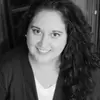Quick decisions: Can rads detect breast cancer in a half-second?
Even when they don’t know the exact location or nature of the problem, radiologists can tell something is not quite right with a mammogram in the blink of an eye.
According to a new study published in the Proceedings of the National Academy of Sciences of the United States of America, radiologists are displaying the human ability to catch the “gist” of a situation within half a second of looking at it. They aren’t necessarily better than chance at picking out where there is a problem or what exactly is wrong so quickly. Their experience could give them an aggregate ability to understand an all-over problem quickly, even when they need more information to make specific declarations. Non-experts are not able to make these quick mammogram judgments.
Radiologists were shown either a bilateral or unilateral image of a mammogram for a half-second. They had to rate whether or not they would call the patient back for further testing—and they were able to identify a scan that would need a closer look at a rate better than would be expected if left to chance.
The researchers were able to determine the ability to detect that something was off was not just about looking at breast density or symmetry, so it wasn’t that the radiologists were looking at a specific characteristic that helped them make that quick decision.
Even when looking at two breasts from the same woman, the radiologists were able to pick out the non-abnormal breast when the woman’s other breast was abnormal, suggesting there is some kind of overall “look” to a woman’s healthy breast tissue when there is cancer present, even if the radiologists could not pinpoint exactly what that “look” was.
The study authors explained the possibly mechanism for this outcome based on their experiment design.
"Because localization performance remained poor across all conditions, we conclude that it is not a specific detail of the lesion that is supporting the decision but rather, abnormality is judged based on some aspect of the overall texture that is best visualized in the higher spatial frequencies,” they wrote.
They go on to explain it is possible that certain conditions that create the disease might be visible in the overall look of the breast tissue, even if a specific lesion is not.
Understanding this big-picture look at breast cancer could help improve early detection, which could significantly improve the ability to treat and cure the second leading cause of cancer deaths in women.
According to the study authors, evidence shows women who have false-positive readings on mammograms are at a higher chance of developing breast cancer than women whose breasts are classified as negative for breast cancer right away.
“Perhaps, even if localized signs of cancer were not unambiguously visible at the initial screening, radiologists still may have been influenced by the global signal of abnormality that we are studying here,” the authors speculated.
And understanding mammogram results better can help reduce costly and potentially upsetting rescans in patients who receive false-positive results.
But this “gist” method isn’t perfect, the researchers cautioned:
“[R]adiologists’ ability to detect abnormality in half a second is probabilistic. They perform above chance but far from perfect and far from their performance under normal conditions of reading mammograms.”
